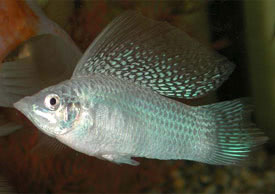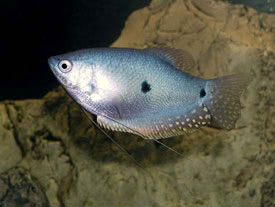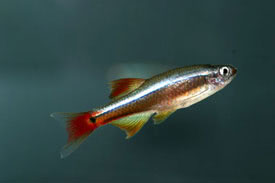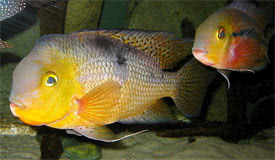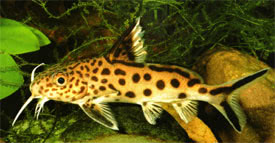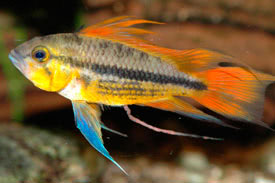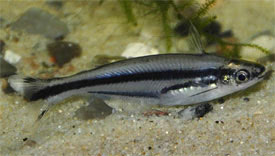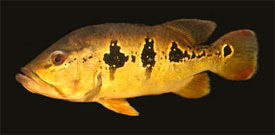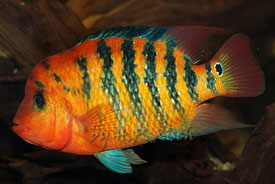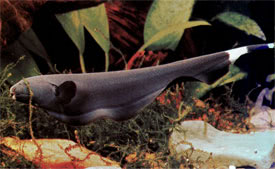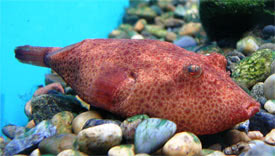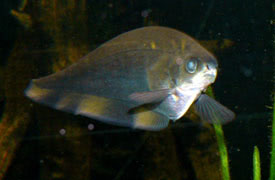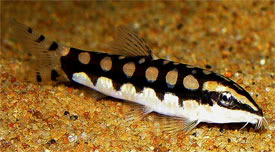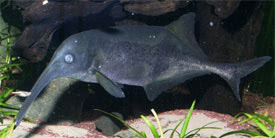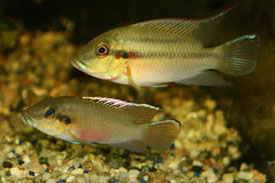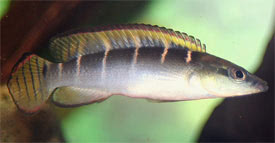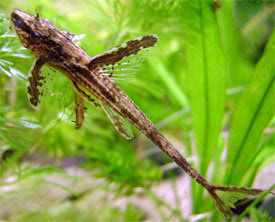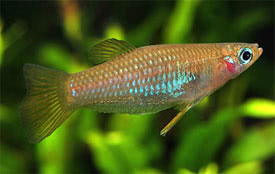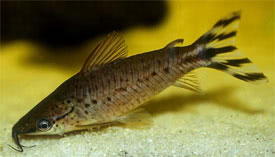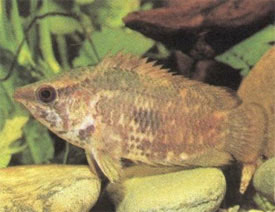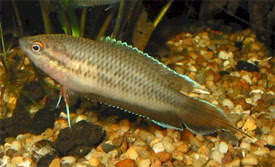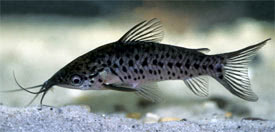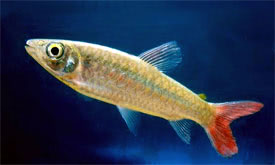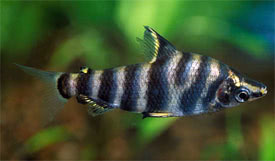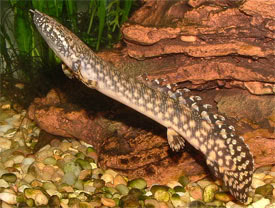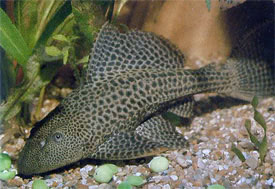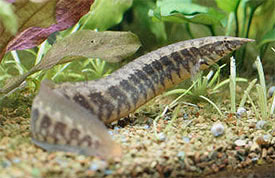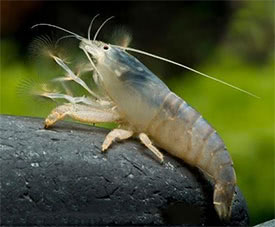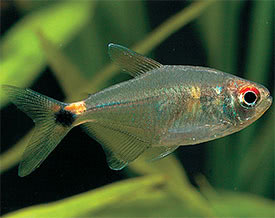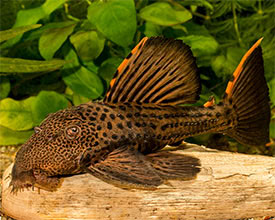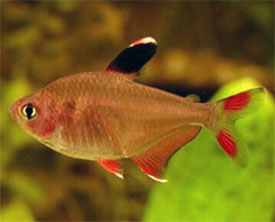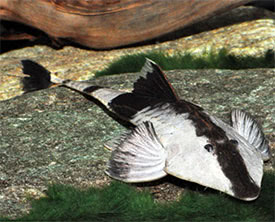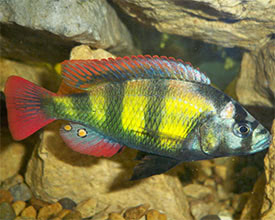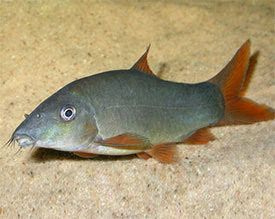
 Magyarul / Hungarian
Magyarul / Hungarian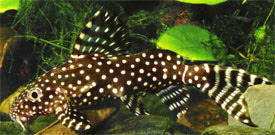


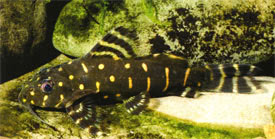
- Scientific name: Synodontis angelicus
- Synonyms: Synodontis angelica, Synodontis tholloni, Synodontis angelicus zonatus, Synodontis werneri
- Common name: Polka Dot Synodontis, Angel Synodontis, Angel squeaker
- Group: Catfishes
- Habitat: Africa; Cameroon, Congo
- Size: 25 cm, but can grow 55 cm in the wild.
- Biotope: Found in large rivers, usually in the slow moving areas.
- Social behavior: Not recommended for the general community aquarium. Nocturnal catfish. It becomes territorial and quarrelsome as it matures, and the adults are often intolerant with other bottom dwellers, especially with other Synodontis. Do not keep with small fish, as they may be eaten. Can be kept with large African cichlids in a community tank.
- Diet: Omnivorous; Unfussy eater in the aquarium, will accept frozen, live and dried foods, and also vegetables such as peas and cucumber, which it will rasp at with the teeth in its lower jaw.
- Breeding: Only possible with the use of hormone injections in aquaria.
- Tank: Minimum 200 litres
- Population: 1 fish for 200 litres.
- Decoration: Use sand or fine gravel as substrate. Lots of rock caves and bogwood, that form many hiding places. Use floating plants to dim the lighting.
- Temperature: 24-28 °C
- pH: 6-8
- Hardness: 3-20 NK°
- Lifespan: 15-20 years
Description: Synodontis angelica is one of the most attractively colored members of the genus, and is also readily identifiable by its coloration. The coloration is species-specific, that depends on type locality, age and mood: the base color can vary from grey to black, while the spots can be white or yellow. The dots are generally smaller on the head. The body is fairly slender, the adipose fin begins roughly midway between the ventral and anal fins and in addition is not very high. The caudal fin is forked to its centre and has pointed caudal-fin lobes. The fins exhibit a pattern of black and white stipes, variable in its density. The underside is generally lighter in color. One form, in which there are more transverse stripes than spots on the body, has been described as Synodontis angelicus zonatus, but is only a color variant that can turn up throughout the entire distribution region of the species, and not a vaild subspecies. Juveniles are more intensely colored, and also show a few stripes on their body, but they tend to lose some of these patterns as they become older. Juveniles exhibit a pattern of white round to elongate oval dots that can be up to almost eye size, and few in numbers, but these spots can also be smaller and considerably more numerous and closer together. Synodontis angelicus was the original name for long time, but the gender of the generic name has been declared feminine, so the name goes back to the original of angelica. Polka Dot Synodontis is a very nocturnal species that will be seen only infrequently during the day.
They can be sexed by examining the genital papillae: males have pointed, while females have more rounded papillae. Captive breeding has occured with the use of hormone injections, but it is uncommon. Most of the fish that are available in the hobby may have been produced in this way. In nature, Synodontis angelica breeds in areas of seasonal flooding that are rich in microorganisms. A female can lay between 3000 and 4000 eggs. They are egg scatterers, and the parents do not care the eggs or fry.






